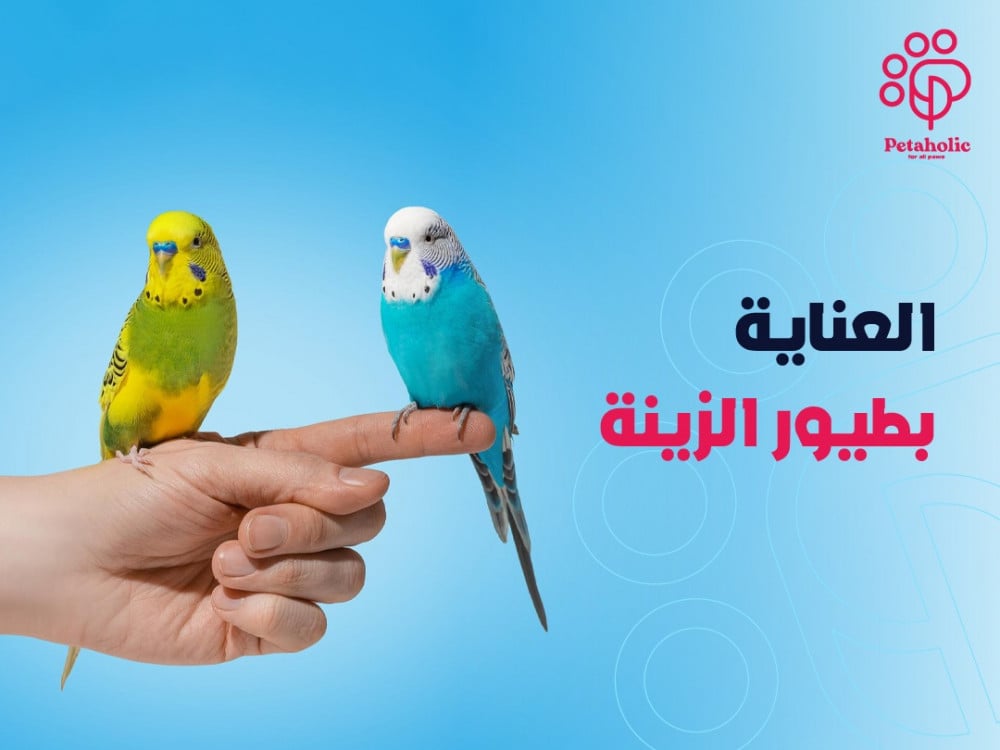
Anyone who owns pet birds will tell you that they are adorable little creatures. With their own personalities and lifespans ranging from 10 to 80 years, take care of your bird properly and you may have a friend for life! If you are considering keeping one as a pet, you need to know more about how to care for pet birds before you commit. In this guide we give you important general tips that you can follow to properly care for pet birds. In Petaholic you will also find all the bird supplies to help you in this task.
What are the basics of caring for ornamental birds in a healthy and safe manner?
Here are the basics of caring for ornamental birds in a healthy and safe manner:
bird cage
There are several standard cage specifications to keep your bird healthy and happy. The bigger the cage, the happier the bird. The cage should allow the bird to fully extend its wings and flap. He should also be able to stand and stretch comfortably without touching the top of his cage. For flying birds, a rectangular cage with perches at each end is ideal. Most pet birds prefer to fly horizontally rather than vertically. As for the type of cage, the best choice is a stainless steel cage like the one we offer at Petaholic. The tall cage allows the birds that live in the treetops to climb very high.
A door that opens downward or to the side is the safest type of door, as a cage door can be very dangerous, and your bird could accidentally catch, injure or kill it. The cage on wheels makes it easy to move. Also, the cage is on wheels, making it easy to move around. Make sure the bars are close enough together so that the bird cannot escape or get caught between its bars. Finally, it is important to make sure the cage has a net bottom and a pull-out tray underneath for easy cleaning, as well as food bowls, perches, and toys.
For cage lining, newspaper is ideal for lining bird cages. Grocery bags and paper bags also work well. Avoid materials such as wood chips and corn. These materials can be messy and may be ingested by birds. If not kept clean, fungus may grow on these materials, increasing the risk of disease.
The right place for the cage
The ideal place for a bird cage is in a corner or against the wall of the room where you and your family spend most of their time. This enables your bird to be part of the family even when inside its cage and feel more secure and protected. Now, you just have to keep two or three sides uncovered instead of having all sides open; This is because the bird still has wild instincts and the instinct to protect themselves from predators is still deeply ingrained. So if you put your bird's cage on a table with all sides of the cage uncovered, he could get nervous and start showing aggressive behaviors. Birds also feel safer when they are above you or have the ability to retreat to a high place.
The right environment for the care of ornamental birds
The bird's cage should be located away from drafts such as a direct line to an air conditioner or heating vent. Providing daily access to direct, unfiltered sunlight to synthesize vitamin D, which is essential for healthy bones, and window glass blocks necessary UV rays. Extended periods of out-of-cage activities are also important to keeping your bird happy. Providing your bird with toys and perches will provide a safe experience outside the cage, and prevent it from sitting and chewing on your furniture.
Trees, plants, and wildlife are enjoyed by birds as much as humans. Even if they are kept indoors, you can still provide them with live plants and branches with leaves still on them, which is a fun natural addition to add a natural touch to your home. Make sure to use safe, edible plants and non-toxic wood.
nutrition
The ideal parrot diet should be 75% to 80% high quality bird pellets, and 15% to 20% fruits and vegetables. Seeds and nuts must be strictly limited if not completely eliminated from your bird's diet in order to properly care for pet birds. Although seeds were once thought to be the staple food for birds, the nutritional needs of pet birds are different. A diet rich in seeds can lead to obesity, strokes, high cholesterol, heart problems, including heart attack, and fatty liver disease in parrots. Therefore, a variety of fruits and vegetables are ideal, including:
- green cabbage
- green dandelion
- Courgettes
- sweet potato
- Chili and jalapeno
- cauliflower
- Green Beans
- bean sprouts
- pumpkins
- Cooked mint, parsley and coriander leaves
Fruits may include:
- pineapple
- grapes
- papaya
- mango
- cocoa
- orange
- Grapefruit
- tangerine
- apple
- plum
- raspberry
Avocados can be toxic, so they should not be fed to your bird. Remove all seeds from the fruit before offering it to your bird.
Among our featured products in Petaholic, which you can put as a butterfly for your bird cage instead of newspapers and paper bags, and it is completely safe and healthy for your birds:
What are the best exercises and games to provide a healthy and enjoyable life for your pet birds?
As with humans, exercise is important to the health and well-being of your birds, and is part of healthy pet care. Here are some exercises you can enjoy with your bird:
- Chasing: You can put your bird on a bed or a blanket on the floor and chase it. Most birds absolutely enjoy this game; However, excessive aggressive behavior during this game is not acceptable.
- Climbing: Encourage your bird to climb and have it run up and down stairs in your home if you have one. If you don't have a ladder, or perch in the cage by making a staircase with it. There are also many products that we at Petaholic offer that you can use to encourage climbing activity in your bird.
- Stepping Steps: Encourage the bird to do multiple stepping exercises from one hand to the other.
- Dance: Play your bird's favorite music and encourage him to dance with you. This will make the bird excited and jump.
- Foraging: This is a great enrichment exercise and an excellent way to feed him vegetables and fruits; Because these are the items most likely to be seen as rewards. The best way to do this is to put your vegetables and fruits in a small bowl and wrap them in paper. At first, pierce a small section of the top, but soon the bird will discover that there is food under the paper. You can also hide staples on top, so climbing
Food is to put vegetables and fruits in a small bowl and wrap them in paper. At first, pierce a small part of the top, but soon the bird will discover that there is food under the leaf. You can also hide food items on top, so climbing is necessary to access them. Exercise and foraging games are readily available for purchase online.
Some of our featured petaholic products that provide your birds with a great playing environment for playing games and exercises:
In the end, we can tell you that owning a bird is a big responsibility and caring for pet birds is even more of a responsibility , but a very rewarding one. Pet birds can make great companions, and if you take good care of your companion, they can bond with you, thrive with you, and lead healthy and happy lives. There is nothing better than Petaholic to source all of your birds' supplies to provide the environment they deserve to thrive.
You may also be interested:

